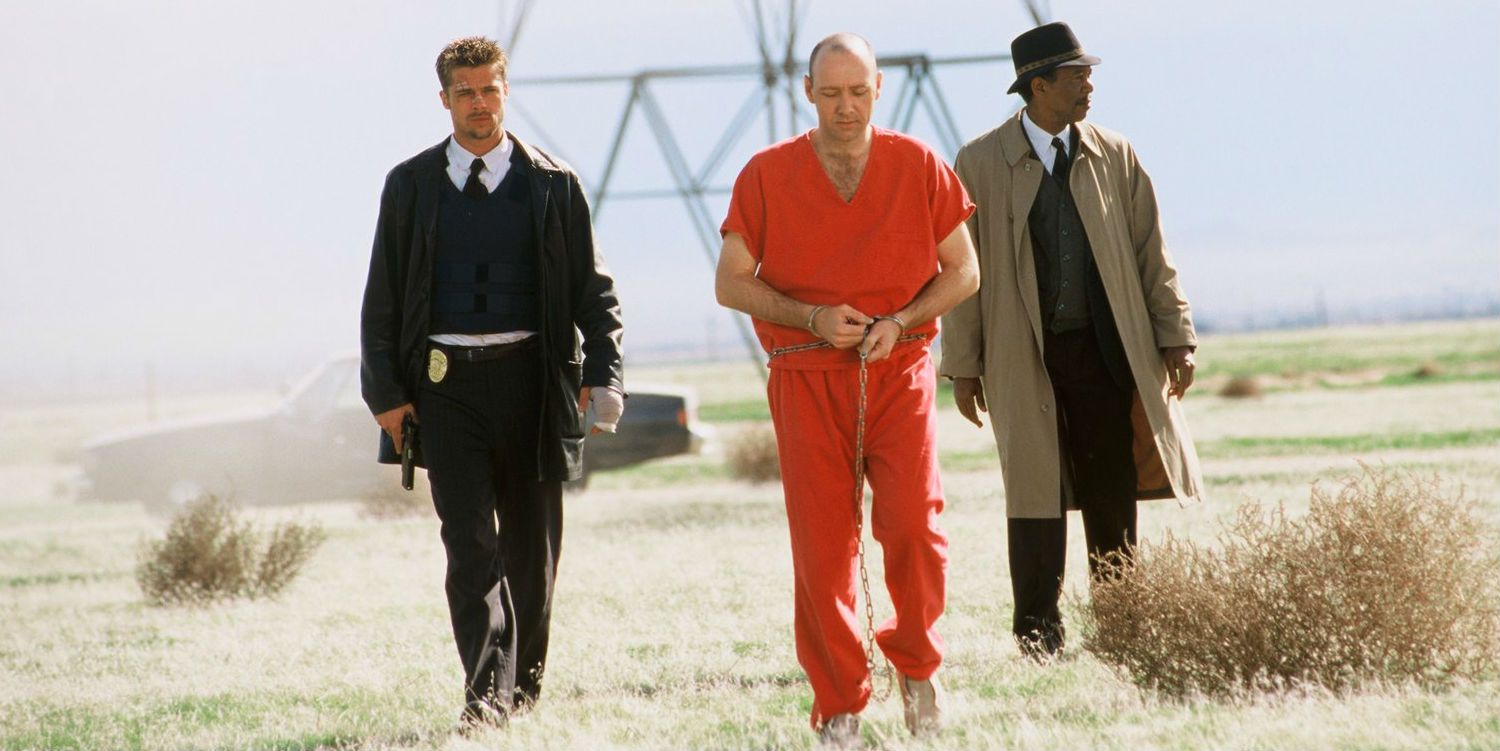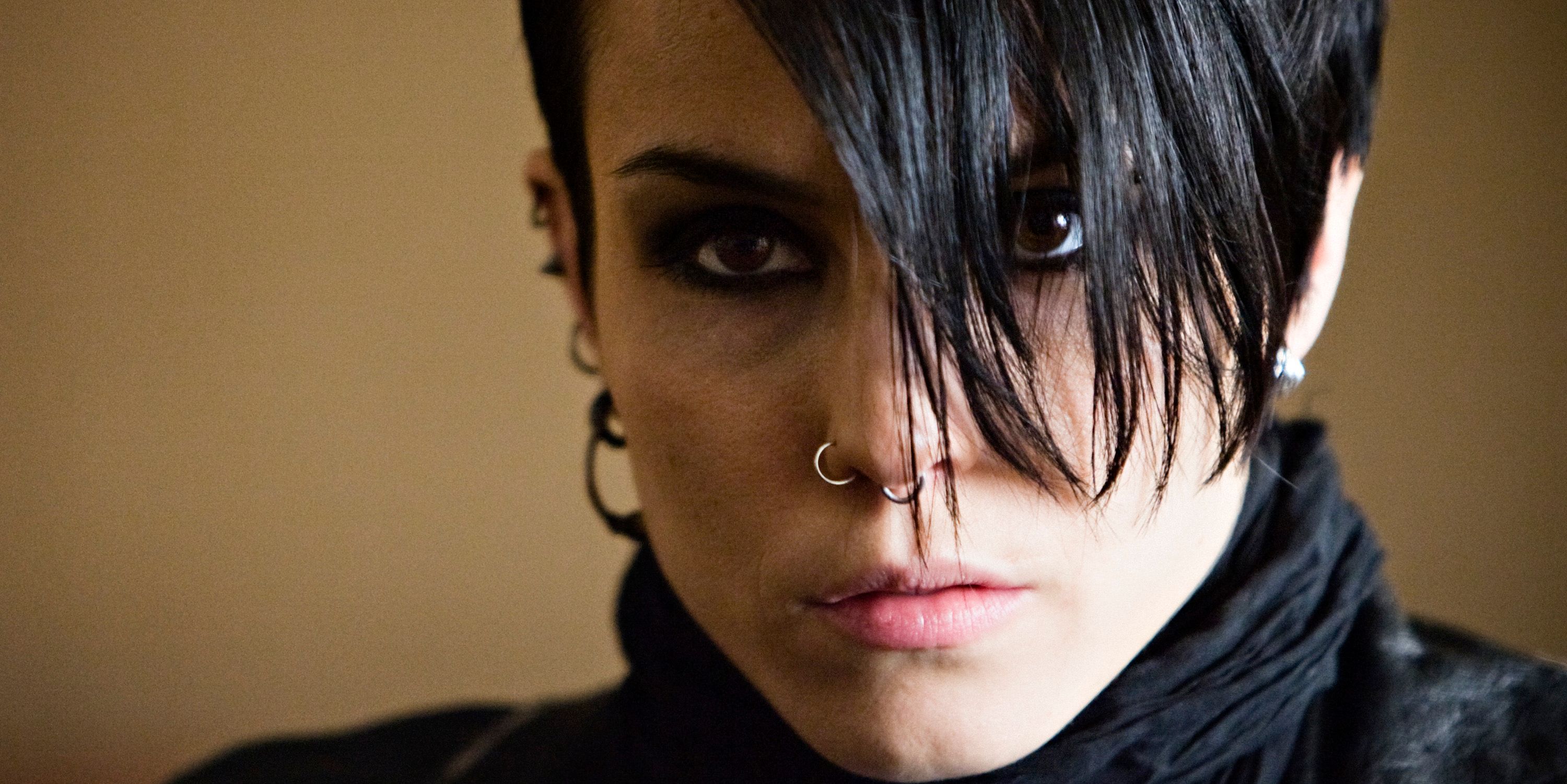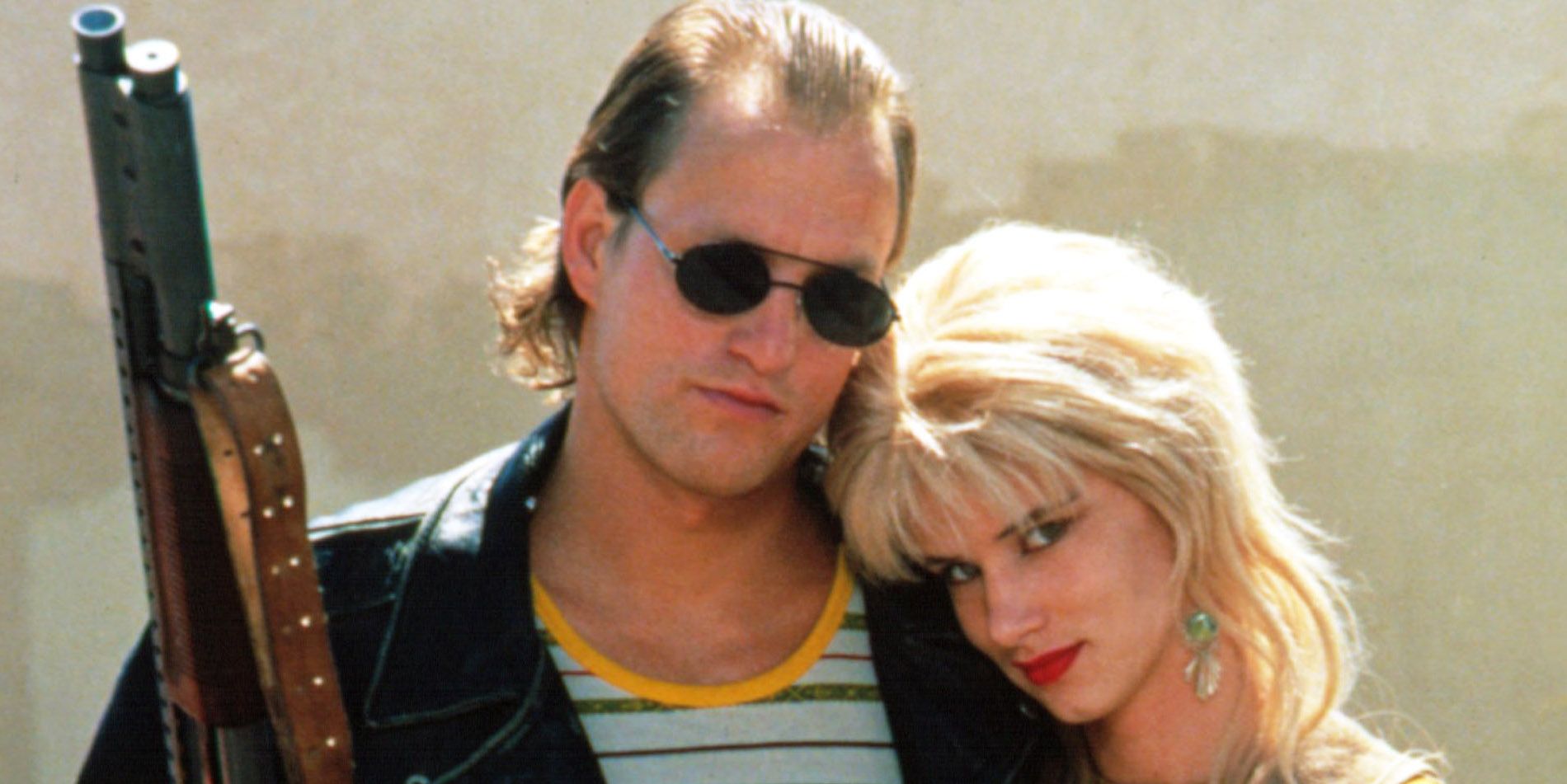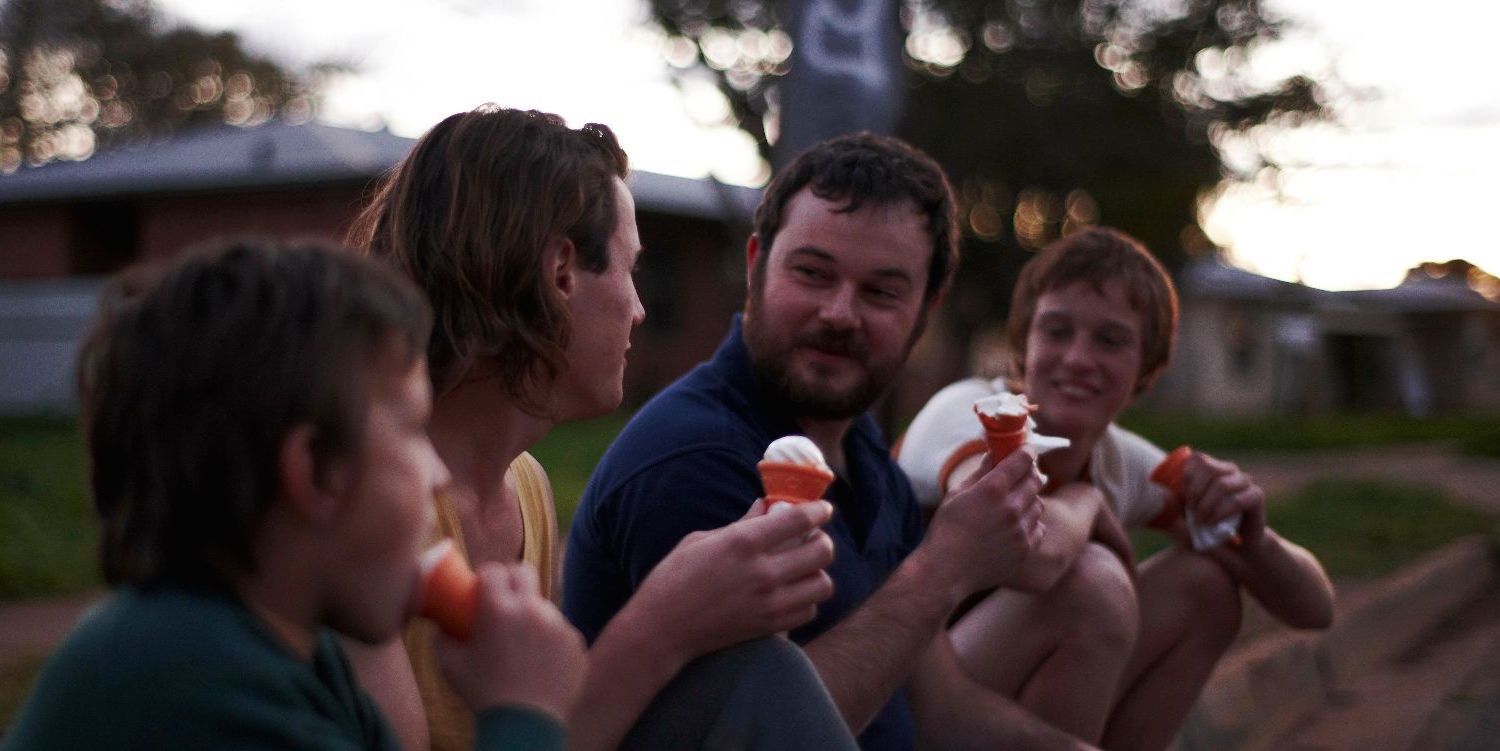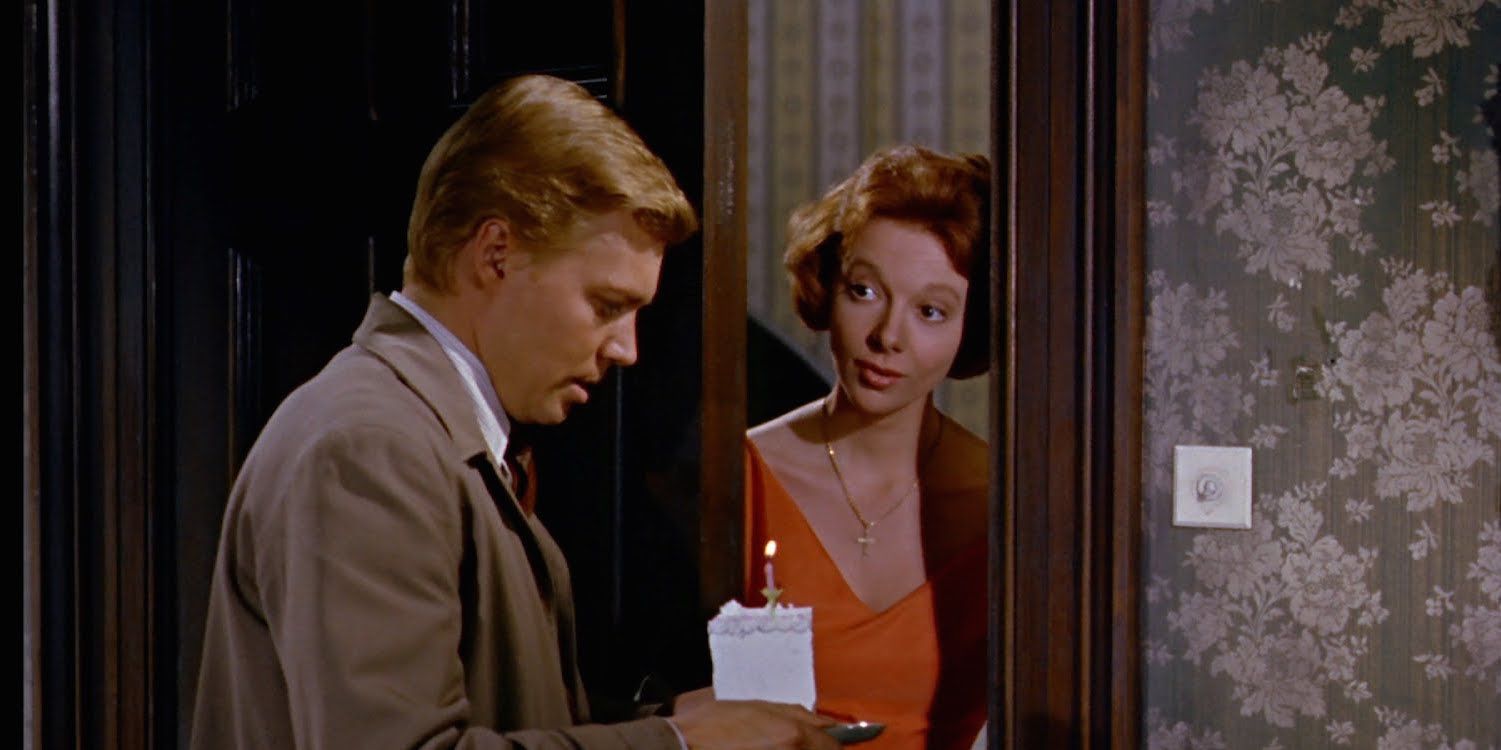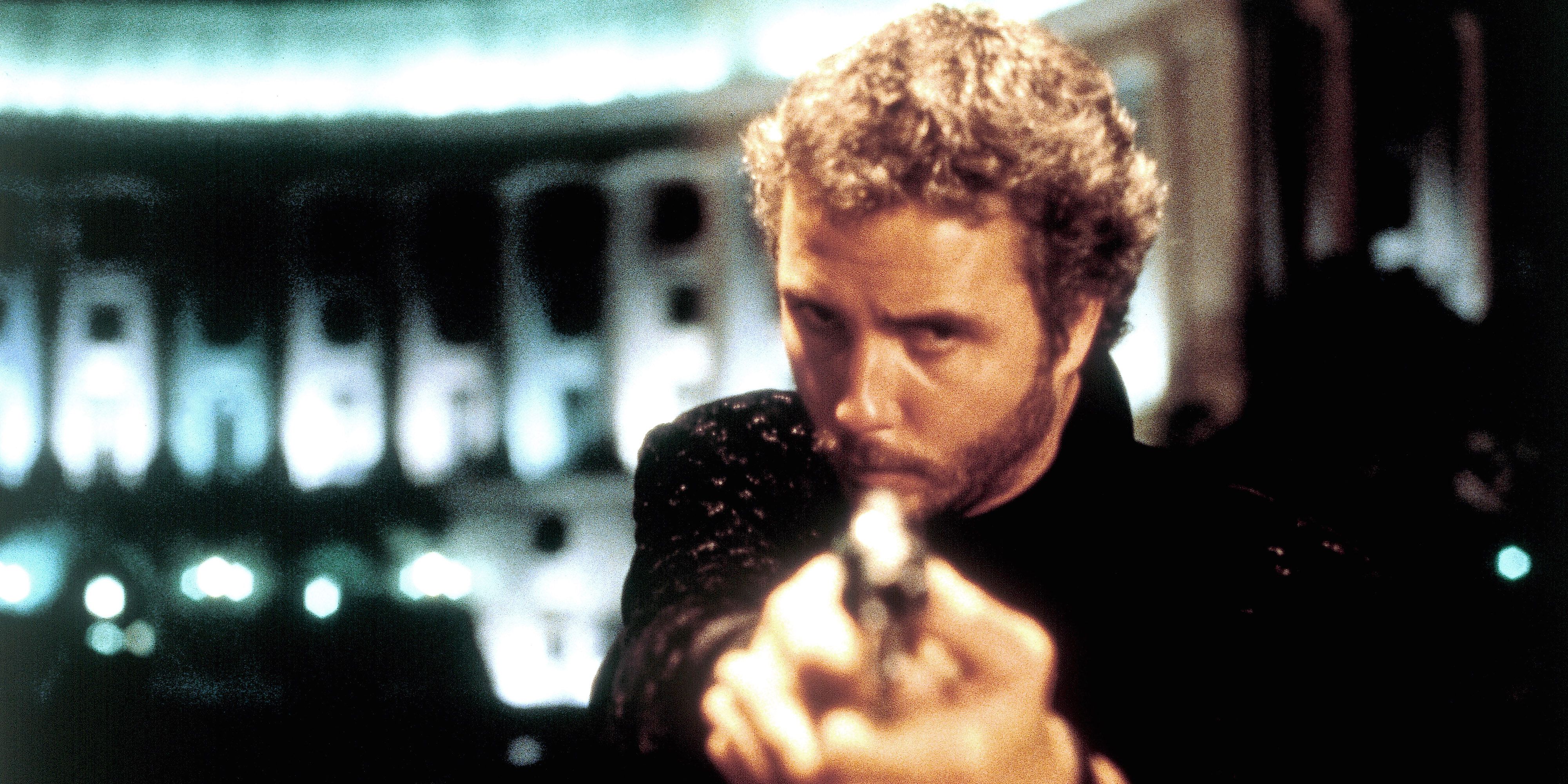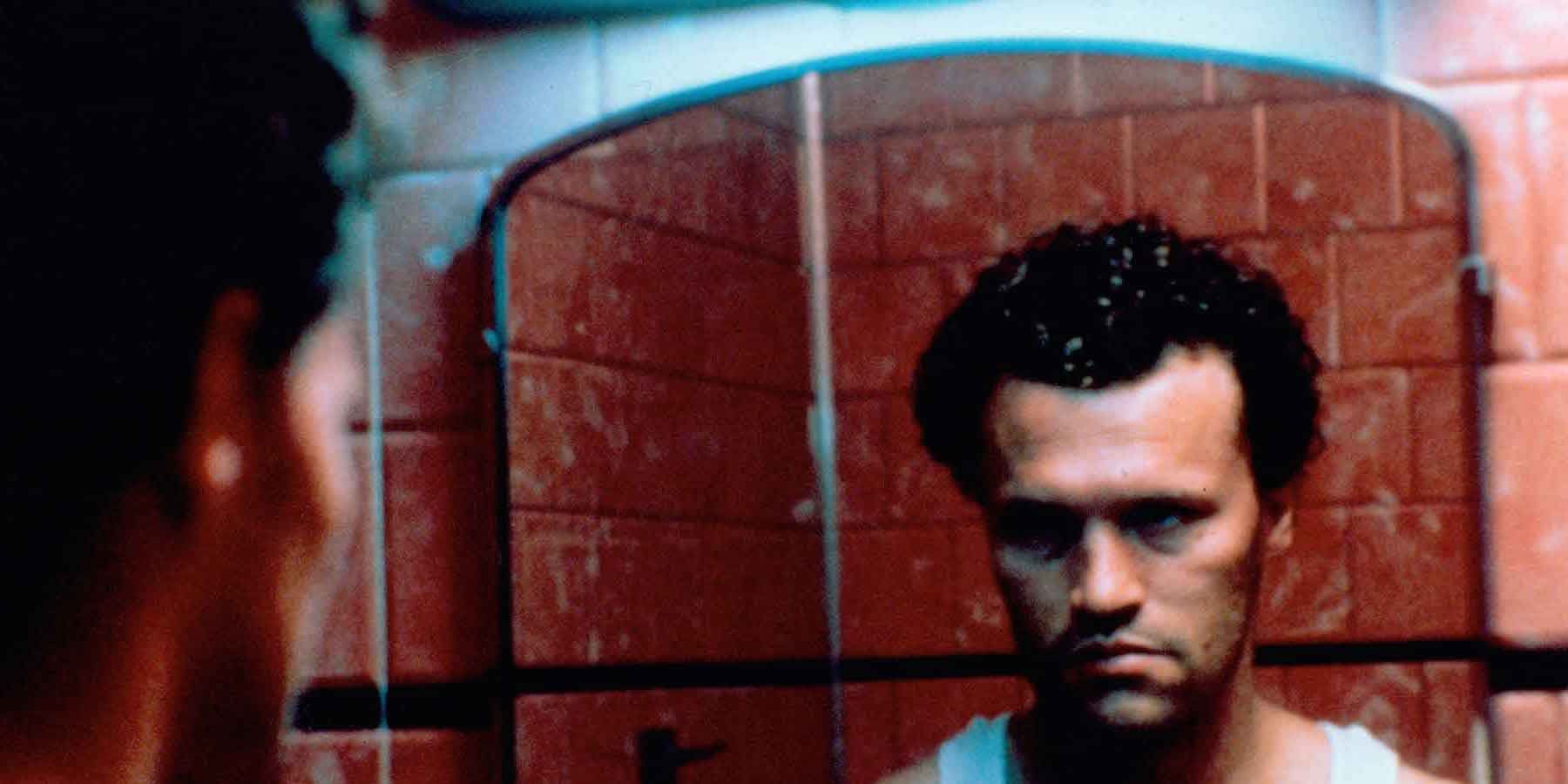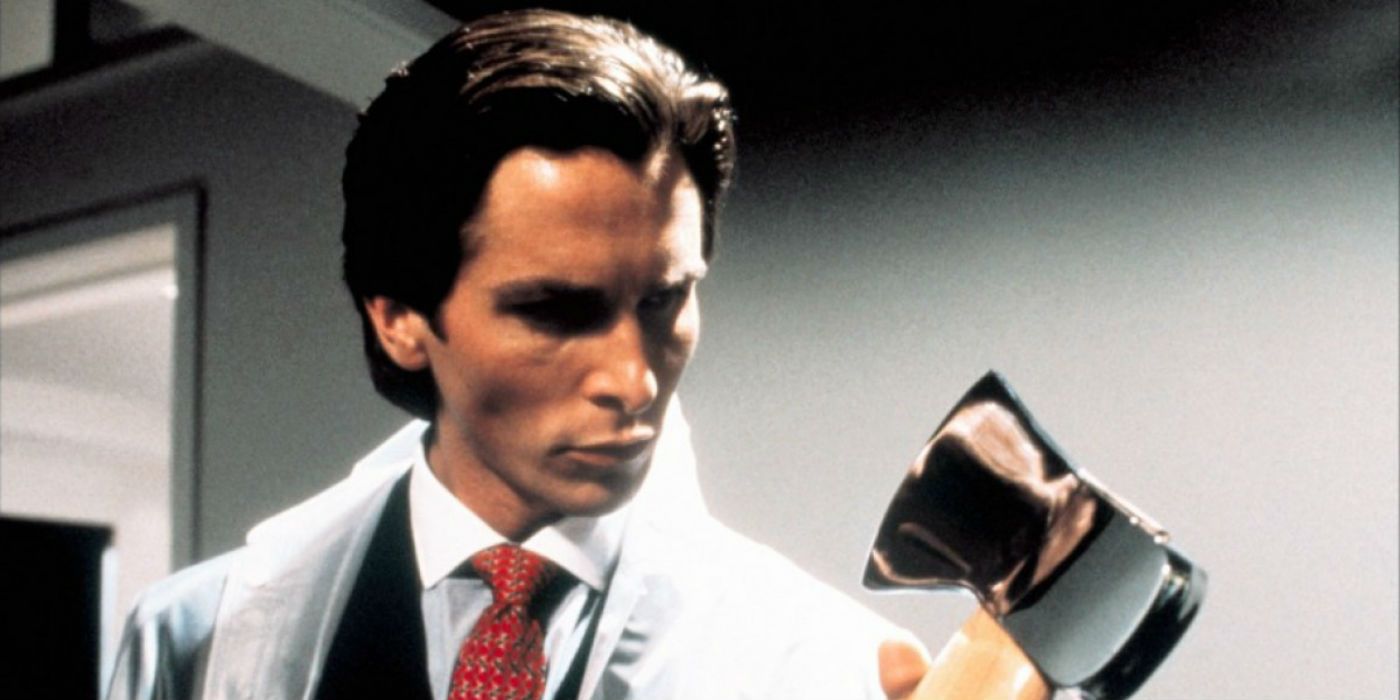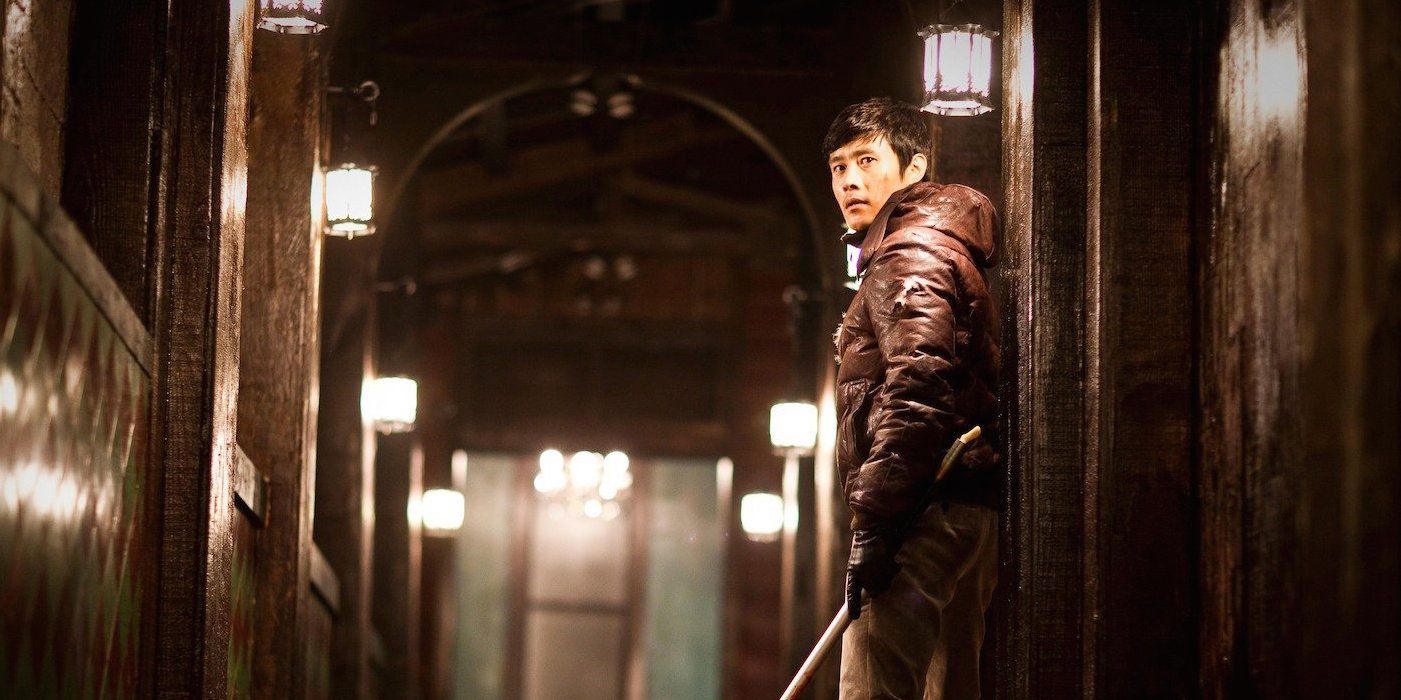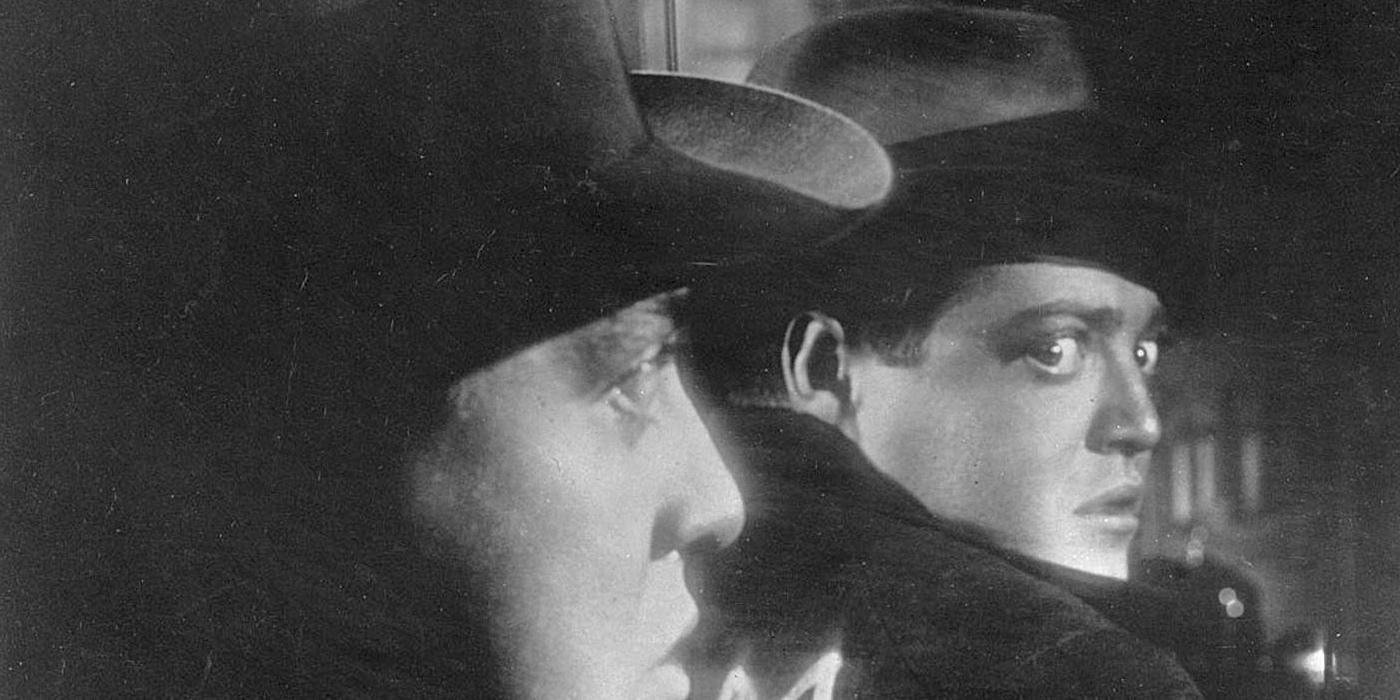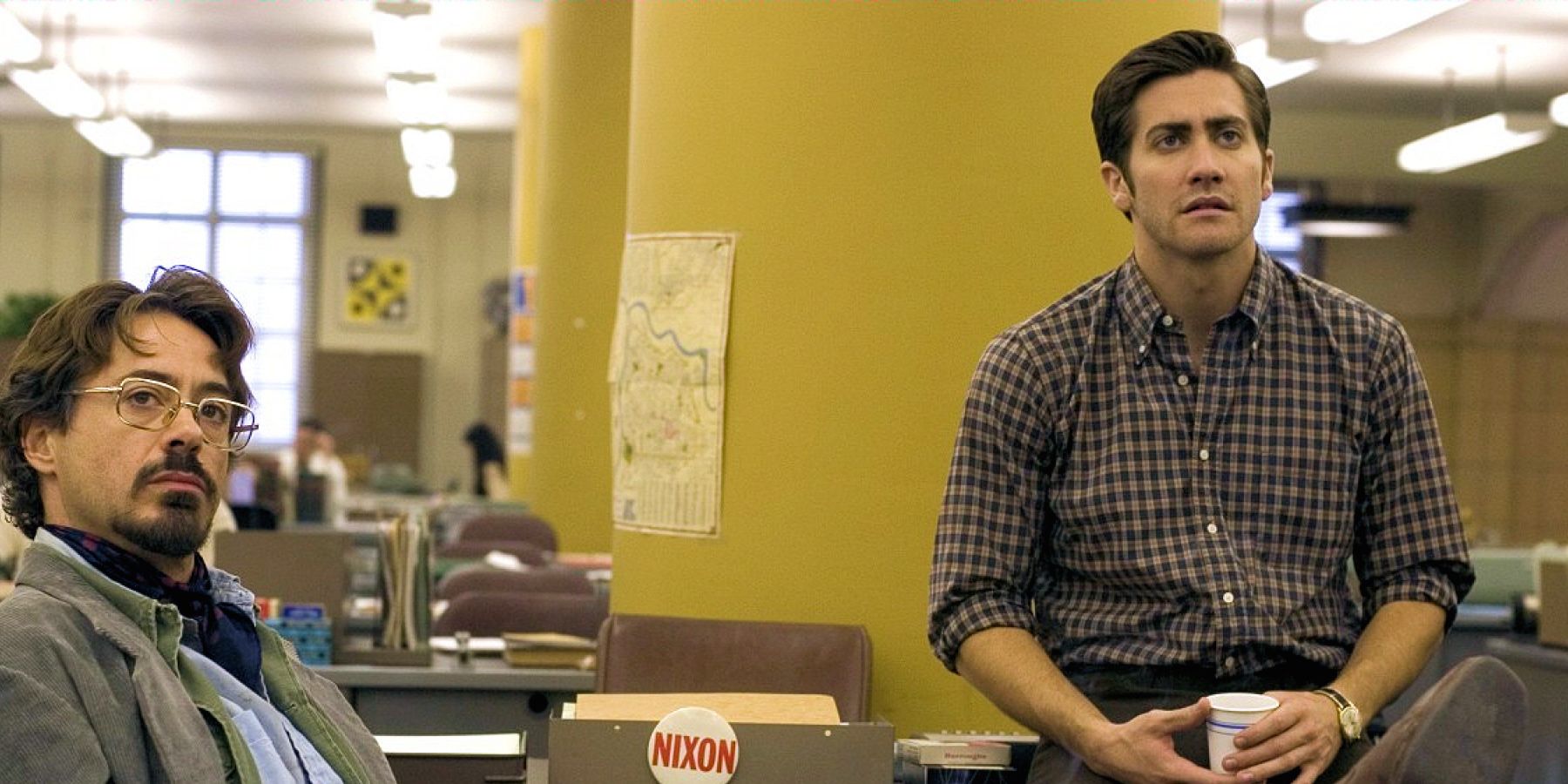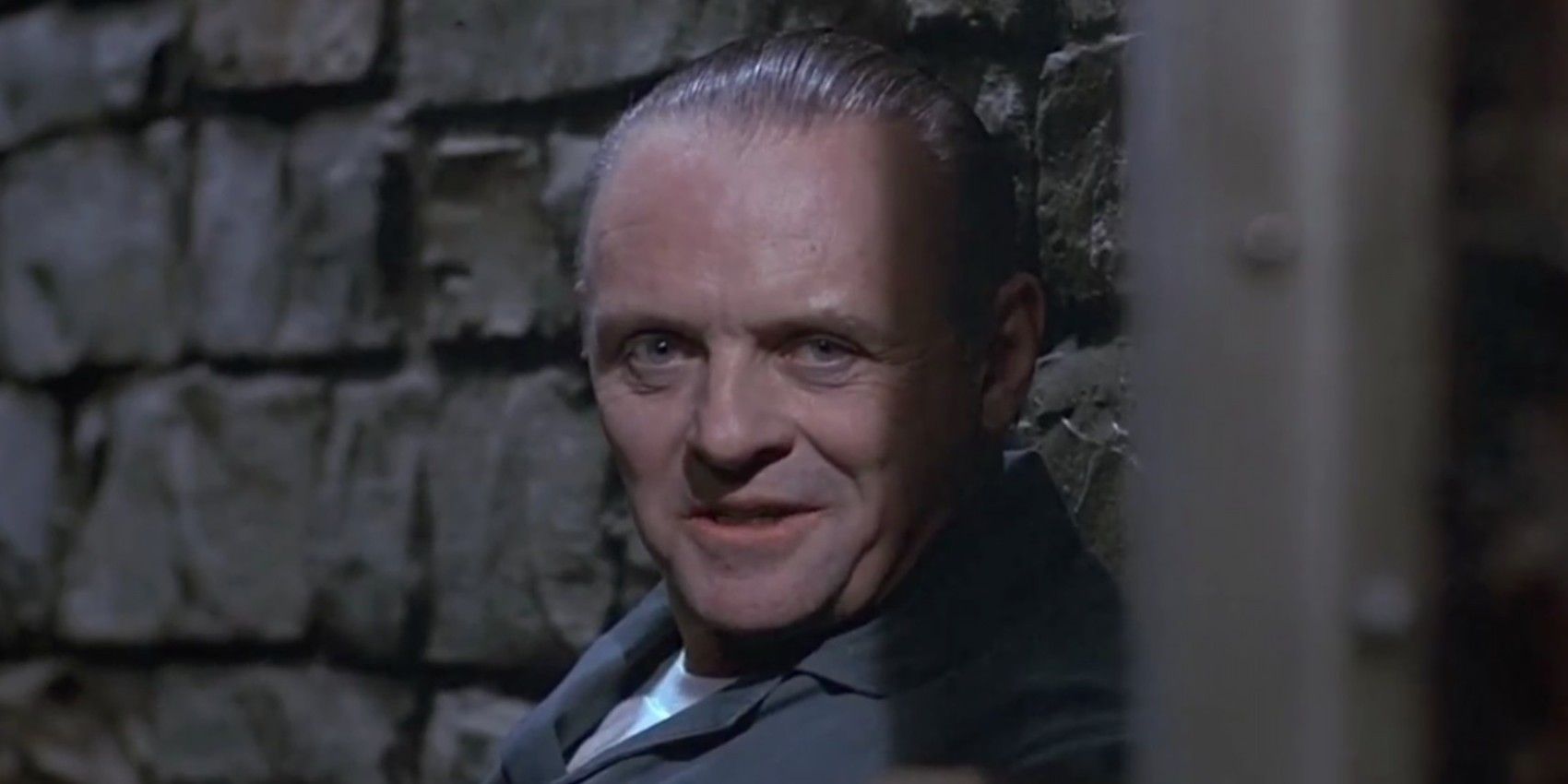If you ask someone to name a list of famous movie serial killers, you’d probably get the obvious choices such as: Michael Myers, Leatherface, and Jason Voorhees. Those famous characters are a big part of movie culture and have helped shape horror as we see it today. But the serial killer isn’t limited to just horror. They’ve been in thrillers, genres, and even comedies. There are so many different ways to go about a story without having to resort to the cliche tropes.
This list was difficult to make because the definition of “serial killer” can vary from person to person. Since there are hundreds of films to choose from, there are a couple of exemptions:
- Vigilantes do not count since they think they are doing good for the community. Jigsaw is an example of this.
- Major franchises such as Friday the 13th, A Nightmare on Elm Street, and Halloween are exempt since supernatural elements exist in those worlds.
Also, it is not recommended to eat before, or during, any of these films. With graphic violence and animal deaths, some of these movies can be nausea-inducing.
15. The Girl With the Dragon Tattoo (2009)
Based off the novel by Stieg Larsson, The Girl With the Dragon Tattoo is as tense on screen as it is on paper. It pairs two incredibly different characters and has them solve a murder mystery through their own means. Mikael Blomkvist (Michael Nyqvist) is a disgraced journalist and tends to lean towards facts and evidence; Lisbeth Salander (Noomi Rapace) is a force to be reckoned with as the hacker with a taser and bad attitude. She doesn’t take anyone’s crap and will get violent when she needs to.
After doing some time in jail for defamation, Mikael is approached by Henrik, the patriarch of the very wealthy Vanger family. He is hired to investigate a decades old mystery surrounding Vanger's niece, Harriet, who disappeared on Children’s Day in 1966. With the help of Lisbeth, they uncover the family’s dirty laundry, including hidden murders and sexual assaults.
Even though this film had a fraction of the budget that the American version had, many people still consider it the superior version. Both are fantastic but, while David Fincher’s version has more style, Niels Arden Oplev focuses more on the mystery and its buildup.
14. Arsenic and Old Lace (1944)
In 1944, Frank Capra had more Academy Awards than any other director. Because of his fame, he could direct whatever he wanted. He decided to adapt the Broadway play Arsenic and Old Lace, and placed Cary Grant in the star role. Even though this was Grant’s least favorite movie to work on, it’s still a great screwball comedy that is just absurd in every way.
Grant plays Mortimer Brewster, a neurotic writer who marries the love of his life despite thinking it’s an out-dated tradition. He decides to go make the announcement to his eccentric relatives who raised him: his nurturing aunts and his mentally ill brother who believes that he is Theodore Roosevelt. While having dinner one night, Mortimer comes across a dead body hidden in a window seat and immediately thinks that his brother murdered him. However, he couldn’t be more wrong. To Mortimer, his aunts are passive women who succumb to whatever their nephews say. When they’re alone, they bring lonely men over to their home and poison their wine with arsenic. They call their crimes a “charity” because they believe that men are better off dead than lonely.
His aunts may have the maternal personality, but they quickly took authority over men’s lives. Because they weren’t married, the aunts considered the men they killed too old and withered to attract a woman (similar to how men treated “spinsters”). Considering the time that this film was made, it’s a shocking reversal on gender roles.
13. Natural Born Killers (1994)
Coming from an accomplished director like Oliver Stone, Natural Born Killers was an unexpected, crazy ride. The dutch angles, crazy editing, and color changes doesn’t seem like they'd come from the same gentleman who won an Oscar for Platoon. But Stone proved that he can go out of his wheelhouse and create something insane. The film was based on an original screenplay by Quentin Tarantino and was revised by Stone, David Veloz, and Richard Rutowski.
Juliette Lewis and Woody Harrelson star as a serial killer couple, Mickey and Mallory, who suddenly become huge celebrities. The more they kill, the more people become obsessed with them. But when reporters try to get close to them, they quickly realize that they’re not television personalities.
The film doesn’t have a straight narrative, but incorporates different segments at random times as if it was a Dateline special. Their tragic pasts are shown as sitcoms with laugh tracks, and clips are shown of fans shouting, “Murder me, Mickey!" Even though Mickey and Mallory are technically spree killers, Stone takes a satirical look at the media’s obsession with all true crime, including murderers like Charles Manson and Ted Bundy. It paints a picture of how often these criminals are romanticized.
Although the film had moderate success at the box office, it has been consistently critiqued for its glorification violence. The film has been accused of influencing copycat killers such as the Columbine Massacre and has been named one of the most controversial films of all time by Entertainment Weekly.
12. The Snowtown Murders (2011)
In the films listed here, there has been one common factor: the serial killer is always a loner. They never had any friends and, if they did, they never joined in the killings. The Snowtown Murders shows a completely different side of that. Based on the true story of John Bunting, The Snowtown Murders shows how a nurturing personality can brainwash people to do your bidding.
The film starts with Jamie (Lucas Pittaway), a younger boy who has been molested by both his half-brother and his mother’s worthless boyfriend. After finding solace in his next door neighbor, John (Daniel Henshall), Jamie is roped into John’s crusade to murder all pedophiles, gay people, and anyone who is just “weak” in general. The film is a chilling study into this man’s dominant personality over his victims, both dead and alive. He opens himself to Jamie by offering him a plan to deal with his rapists—like putting chopped up kangaroo on their porch. It’s then that he has complete access to Jamie’s mind and will. This was the feature film debut of director Justin Kurzel and he does an astonishingly good job at creating a solemn mood. He focuses less on the crimes and more on the influence of what would become Australia's most notorious serial killer.
11. Monster (2003)
When folks want to talk about actors who went through a major transformation for a movie, Charlize Theron’s role in Monster usually comes up. She gained weight and spent hours putting on prosthetics to portray Aileen Wuornos, the female serial killer who targeted her johns. If you’re looking for a police procedural, then Monster might be the wrong movie for you. Writer-director Patty Jenkins put exhaustive effort into expressing Aileen’s fragile state of mind and multiple mental illnesses rather than her crimes. Jenkins wrote about her abusive childhood and her budding relationship with her romantic partner Selby Wall (her real name was Tyria Moore). The real Aileen Wuornos suffered from antisocial and borderline personality disorders which Theron embodied scarily well.
While extremely graphic, the rape scene showed a state of vulnerability in Aileen. Even though she was a serial killer, she was still a woman who was preyed upon by a sadistic male. Jenkins left some room for compassion but also made sure to illustrate that Aileen crossed a line by killing in cold blood.
10. Peeping Tom (1960)
1960 was a game changing year for the horror genre. Instead of having killers and villains from supernatural backgrounds, they began to be portrayed as tragic human beings. Peeping Tom is considered the first slasher film in movie history and introduced the convention of seeing the murder through the killer’s point of view. However, due to its violent material, it was critically panned at the time and ruined director Michael Howell’s career in the United Kingdom. Over time, it reached cult status among audiences and is even thought to be a masterpiece to some.
It focuses on Mark Lewis (Carl Boehm), an introverted filmmaker who murders women while filming their dying expressions. While some films glorify filmmaking as a craft, Peeping Tom shows the aggressive side of it. The audience gets to play along with Mark’s voyeurism and witness how filmmaking can violate its subjects.
Even though he is certainly a villain, Mark’s tragic upbringing plays a key part in his actions. As a child, his father regularly put him and other children in experiments to draw fear out of them. Mark’s desire to draw fear out of his victims certainly comes from the patriarchal oppression that he had succumbed to all of those years back. Mark has been called the British counterpart of Norman Bates, but some say that he is more sympathetic than Hitchcock’s iconic murderer.
9. Manhunter (1986)
Based on Thomas Harris’ book, Red Dragon, Manhunter is the first film to bring Hannibal Lecter on screen. Even though Brian Cox’s Hannibal Lector (or Lecktor in this film) isn’t as famous as Anthony Hopkins’ rendition, he still puts on a very convincing act.
Instead of Clarice taking stage, we have criminal profiler Will Graham (William Petersen) as the focus of the film. After catching Hannibal Lecktor and putting him behind bars, Will decides to retire because the case took too much of a toll on him. However, he is persuaded to come back to investigate a serial killer known as “The Tooth Fairy”. But one of the requirements is that he has to face Lecktor once more in order to solve the case.
Red Dragon was eventually re-adapted in 2002 to incorporate Hopkins’ Lecter but it was nowhere near as impactful as Manhunter. This is one of Petersen’s first feature roles and it's a surprise that he didn't become as big a star as he should have. He creates a complex, multi-faceted character who isn’t afraid to go dark when need be.
Director Michael Mann knows how to pack a punch without showing too much. Instead of showing graphic violence, he leaves it up to the viewer’s imagination. He relies on different colors to indicate mood and creates a nightmarish background to illustrate Graham’s instability. Even though The Silence of the Lambs became the more famous rendition, Manhunter is just as compelling.
8. Henry: Portrait of a Serial Killer (1986)
Loosely based on the life of Henry Lee Lucas, Henry: Portrait of a Serial Killer is a crime thriller that follows the rampages of a serial killer played by Michael Rooker. In jail, he befriends a fellow prisoner named Otis who joins him in his spree. Together, they commit a series of brutal murders, including the slaughter of a whole family (which they videotaped).
Nowadays, people see Rooker as a redneck hick or a blue-skinned alien from space. But as Henry, he was just plain terrifying to audiences. While horror films mainly trivialize death and show villains as one dimensional, Henry is the disturbing character study of a man who has no conscience. There are no cops or detectives present, just two men who target innocent people randomly.
The film was completed in 1986 but was shelved due to an X-rating. It wasn’t until 1989 that it was finally shown at the Telluride Film Festival. It has received critical and international praise but always has been heavily criticized due to the graphic violence. It’s not an easy film to get through, but one of the most realistic portrayals of a murderer.
7. American Psycho (2000)
American Psycho is more fun than disturbing. Based on the novel by Bret Easton Ellis, it’s a satire of 1980s yuppie culture. Patrick Bateman (Christian Bale) is a rich businessman who literally has it all: He’s good looking, has a diploma from Harvard, and also works at an established investment firm. He’s extremely vain and cares more about his business cards than his own fiancee.
But as Patrick tells us in his narration, he’s just a empty suit. When night hits, he turns into a deranged killer who murders prostitutes and business rivals (while also trying to educate them on '80s musical gems). Or does he? When a detective (Willem Dafoe) starts to get suspicious of him, Patrick’s professional facade starts to break and his fantasies begin to mesh with reality.
Much to Ellis' disdain, independent film director, Mary Harron, and writer, Guinevere Turner, added in pieces of their own vision. They made the story more layered by mixing in misogyny and patriarchal authority among the satirical content. They implemented the female gaze and poked fun at the fragile male ego. Though women get to watch Patrick seemingly go downhill, the ending shows that men can still get away with anything. American Psycho may take place in the '80s, but Harron and Turner’s take isn’t all that far off from today’s society.
6. I Saw the Devil (2010)
Because of its ultra-violence (mainly towards women) I Saw the Devil can be a very hard watch to get through. Directed by Jee-woon Kim, it’s about a secret agent, Soo-hyeon Kim (Byung-hun Lee), obsessed with finding the killer who brutally murdered his wife. Now, this isn’t a procedural or murder mystery movie; in the very first scene we see Soo-hyeon’s wife getting murdered by Kyung-chul (Min-sik Choi), a bus driver who targets young women. Driven by revenge, Soo-hyeon plays a dangerous game of cat and mouse with Kyung-chul, haunting him wherever he goes.
This film might easily be passed off as torture porn, but Kim gives it more substance than that. He focuses on Soo-hyeon’s obsession with Kyung-chul and his eventual change from mourning husband to monster. Because of his constant toying with Kyung-chul, it seems that the roles are flipped and the serial killer has become the victim. The audience witnesses the murderer commit so many atrocious acts that they are cheering for Soo-hyeon to commit his revenge. But because they act that way, it seems like the director is also pointing out how they’re the same as Soo-hyeon.
Like with his previous film, A Tale of Two Sisters, Kim creates an engaging character study instilled with stunning imagery and cinematography. If you’re able to stomach the extreme violence, it’s definitely worth a watch for all thriller fans.
5. M (1931)
Fritz Lang has called M his favorite film because of the social criticism attached to it. He made it to warn mothers about neglecting their children and to showcase his hatred of Germany during the Nazi uprising. It’s his first talking film, but uses dialogue so sparingly. Lang makes the silence more powerful than words which, in turn, gives the film the perfect amount of suspense.
It stars character actor Peter Lorre, in one of his most notable roles, as the child murderer Hans Beckert. He barely has a physical presence in the film; Lang presents him like a looming shadow with the children getting murdered off screen and hearing his whistle while he’s walking down the street. An assortment of criminals create their own crusade, using beggars to figure out where he lurks. After they track him down, they bring Hans to face a kangaroo court where they will be the judge and peers.
It’s then that Hans recites a passionate monologue about why he kills: “I have no control over this, this evil thing inside of me, the fire, the voices, the torment! … It’s there all the time, driving me out to wander the streets, following me, silently, but I can feel it there. It’s me, pursuing myself! I want to escape, to escape from myself! But it’s impossible. I can’t escape, I have to obey it. "
It’s one of the few times that we see the serial killer show true regret for what he’s done. Lang isn’t telling us to forgive Hans, but rather to understand him. It’s a fascinating study of not only the justice system but also free will.
4. Zodiac (2007)
The first of two David Fincher films on this list, Zodiac is particularly frightening because the killer has never been caught. Based on the nonfiction book of the same name, the film looks at the detectives and reporters as they obsessively try to catch the infamous Zodiac killer in San Francisco.
A month after an initial attack on a couple, a coded letter is received at the San Francisco Chronicle confessing to the crimes. As the letters start to get more frequent, crime reporter Paul Avery (Robert Downey Jr.) and cartoonist Robert Graysmith (Jake Gyllenhaal) start looking into the case.
Even though the film might feel a bit slow to some viewers, the plot is engaging and time flies by when you’re watching. Obsession is the theme of the film, revolving around Gyllenhaal and also Fincher himself. He pays close attention to detail and nails the 1970s era, from the cars to the sideburns. He even made the tone feel like a throwback to 1970s detective films. Anyone could do a gory slasher showing the Zodiac killer at work, but Fincher’s disciplined filmmaking helps keep the audience immersed in a seemingly slow plot.
3. The Silence of the Lambs (1991)
Based on the novel by Thomas Harris, The Silence of the Lambs reintroduces Hannibal Lector to the cinematic world. While Brian Cox did a wonderful job in Manhunter, Anthony Hopkins is the one who made the character famous. In only 24 minutes of screen time, he managed to entrance the audience and even snag the Oscar for Best Actor.
Jodie Foster stars as Clarice Starling, an FBI profiler who is assigned to the investigation of Buffalo Bill—a serial killer who takes the skin of his female victims. Her higher-ups tell her to interview the cannibal psychologist, Hannibal Lector, because he may have information on her current case. In their few scenes together, we see Hannibal study Clarice and suddenly turn the interrogation upside down, questioning her instead.
Even though he was overshadowed by Hopkins’ performance, Ted Levine was menacing as Buffalo Bill. Screenwriter Ted Tally combined three real life serial killers in order to make the character: Ed Gein, who skinned his victims; Ted Bundy, who used a cast on his arm to lure victims to his van; and Gary Heidnik, who kept his victims in a pit in his house. Levine balanced all three of those traits and also managed to add his own flare to the character’s personality.
The film’s budget was very small, at only $19 million, and it was a huge financial success, making $130 million at the box office. It swept the Academy Awards and because the third film in history to take every major Oscar category.
2. Psycho (1960)
When you hear Bernard Herrmann’s haunting soundtrack, you’ll immediately know what film it’s from. As far as classic films go, Psycho is one of the most recognized by casual film watchers and movie buffs alike. It was Alfred Hitchcock’s first horror film and the biggest financial success of his career.
The plot is a familiar one: After her sister Marion's mysterious disappearance, Lila (Vera Miles) and her lover, Sam (John Gavin) travel to look for her whereabouts. When they get to Bates Motel, they will have to spend time with introverted Norman (Anthony Perkins) and his mysterious mother.
Hitchcock spent plenty of time conveying the different themes present. Shadows are frequently used to loom over people’s faces and bring that sense of dread to the background. He challenged people’s comfort zones by featuring a forbidden sexual relationship, graphic violence, and even women in lingerie (big risk at the time). It was easily one of the biggest building blocks of the serial killer genre and went on to influence other iconic slashers such as The Texas Chainsaw Massacre and Halloween.
1. Se7en (1995)
Se7en isn’t simply regarded as one of the best serial killer films; it’s also considered one of the best movies ever. Andrew Kevin Walker’s suspenseful story translates beautifully to screen thanks to David Fincher’s extreme attention to detail. It’s gritty and disgusting, but isn’t primarily focused on the serial killer. The spotlight is mainly on Detectives Mills (Brad Pitt) and Somerset (Morgan Freeman) and how they mesh together. Somerset is rational and patient while Mills is guided by his emotions and is quick to reacting, not caring if his actions are legal or not.
Fincher is known for his use of color and space, and Se7en is no exception. He uses a combination of oversaturated colors and space to perfectly set the tone of the film. The constant rain and lack of a city name makes the setting feel like it’s out of a pulpy fiction novel.
While his reveal isn’t the biggest twist, Kevin Spacey stole the show as John Doe. We know nothing about him and yet we’re drawn to his calm personality. There's no one else who could have pulled it off like Spacey. He even had to be hidden in the marketing because Fincher was afraid that everyone would guess that he was the killer.
With only Alien 3 under his belt at the time, Fincher surprised everyone with this classic serial killer flick. Se7en has had a big impact on many different genres. The Russo Brothers have even said that it influenced Captain America: Civil War.

